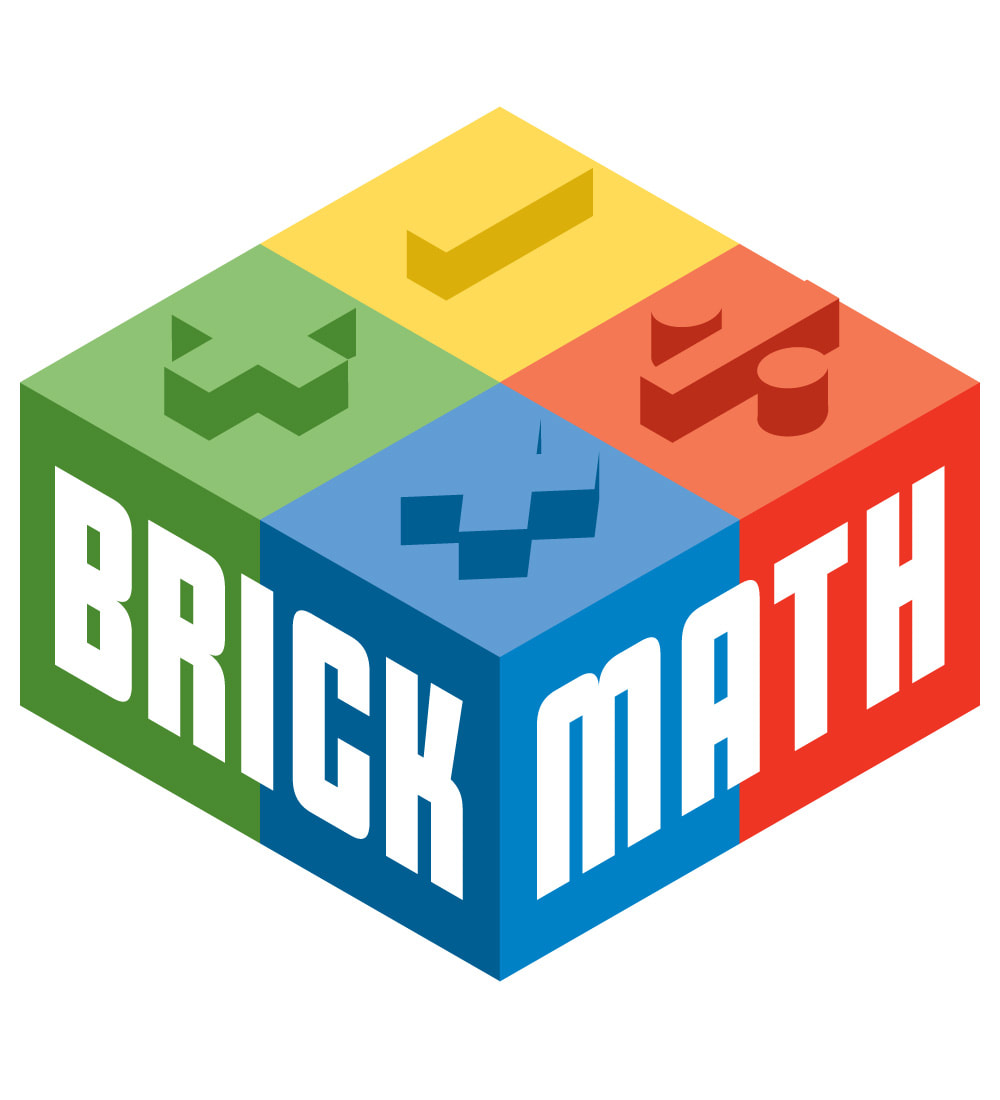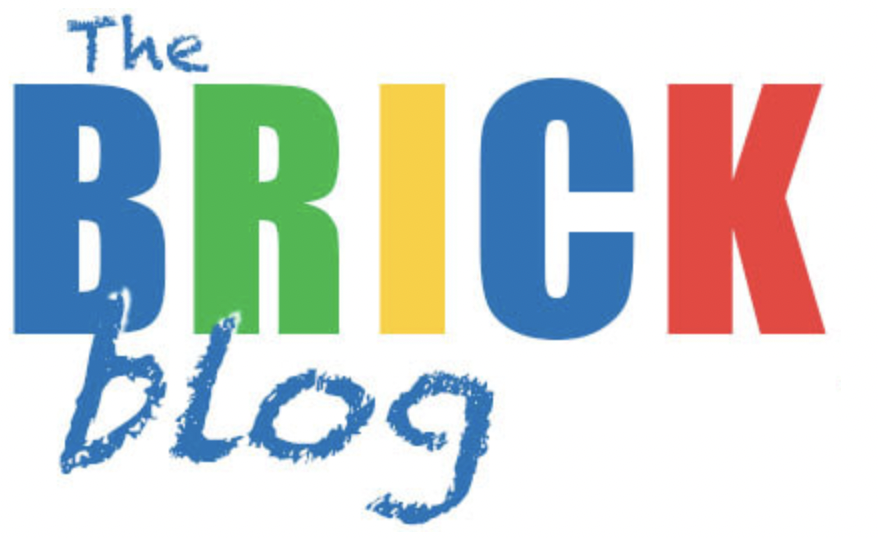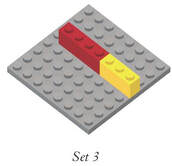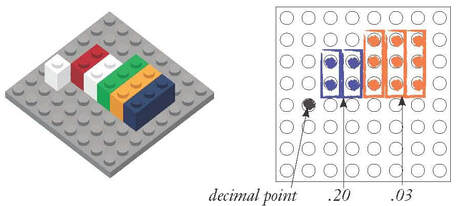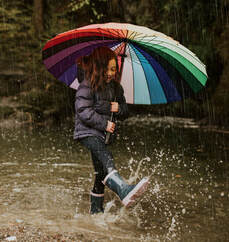 Image by rawpixel.com on Freepik Image by rawpixel.com on Freepik "April showers bring May flowers." April's Lesson of the Month on Decomposing Numbers in Addition brings May's Lesson of the Month on...Decomposing Numbers in Subtraction! To get the May 2023 Brick Math Lesson of the Month, "Decomposing Numbers / Place Value," plus a new lesson each month, click here. Each Lesson of the Month includes the Teacher Lesson Guide as well as the Student Workbook pages that correspond to the lesson. 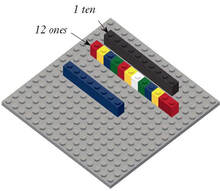 This lesson, from Brick Math's Subtraction Using LEGO® Bricks, models decomposing one ten into ten ones for the purpose of solving a subtraction problem. It also helps students understand the concept of place value, clearly showing bricks that represent both the tens and the ones places. It's a great way to explain what it actually means to subtract 8 from 22, which can be a difficult idea for some students to grasp when they start learning to subtract. 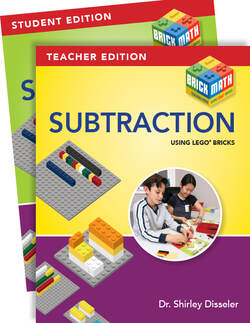 Brick Math is a K-6 math curriculum that uses LEGO® bricks to model 11 different math subjects: Counting, Addition, Subtraction, Multiplication, Division, Basic Fractions, Basic Measurement, Fraction Multiplication, Fraction Division, Advanced Measurement and Geometry, and Decimals. This year, the program will expand to include grades 6 - 8, with the additional subjects Data and Statistics, Pre-Algebra, and Ratios and Proportions. Brick Math works in many applications: for homeschooling, math intervention, enrichment, and as a whole-school program. Materials are simple and affordable. 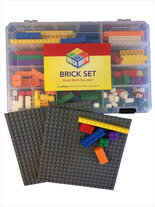 If you are a math teacher or a parent with a student at home who is learning K-8th grade math, check brickmath.com. The website includes videos for both teacher training and direct instruction of students. You can learn more about how Brick Math improves students' math test scores and hear what people who are using Brick Math have to say about the program.
0 Comments
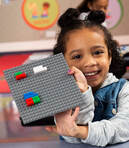 The Brick Math Free Lesson of the Month for April 2023 comes from the book Addition Using Lego® Bricks. It's a great way to show young learners the meaning of ones and tens, and how to transform 10 ones into 1 ten. To get the April 2023 Brick Math Lesson of the Month, "Decomposing Numbers," plus a new lesson each month, click here. 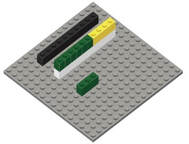 This concept is foundational to mathematics, and will appear again and again as students learn about place value throughout the elementary and middle school math curriculum. This simple method of showing how to decompose from ones to tens using LEGO® bricks will help every student fully grasp the concept. 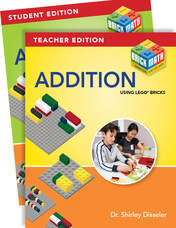 Brick Math is a K-6 math curriculum that uses LEGO® bricks to model 11 different math subjects: Counting, Addition, Subtraction, Multiplication, Division, Basic Fractions, Basic Measurement, Fraction Multiplication, Fraction Division, Advanced Measurement and Geometry, and Decimals. This year, the program will expand to include grades 6 - 8, with the additional subjects Data and Statistics, Pre-Algebra, and Ratios and Proportions. Brick Math works in many applications: for homeschooling, math intervention, enrichment, and as a whole-school program. Materials are simple and affordable. 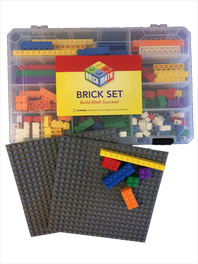 If you are a math teacher or a parent with a student at home who is learning K-8th grade math, check brickmath.com. The website includes videos for both teacher training and direct instruction of students. You can learn more about how Brick Math improves students' math test scores and hear what people who are using Brick Math have to say about the program. 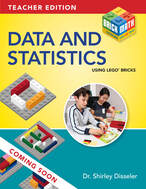 This Brick Math Lesson of the Month is from a new book not yet out — Data and Statistics Using LEGO® Bricks. The book will be published this spring as part of the expansion of the Brick Math curriculum into grades 6 - 8. To get the March 2023 Brick Math Lesson of the Month, "Representing Data," plus a new lesson each month, click here. 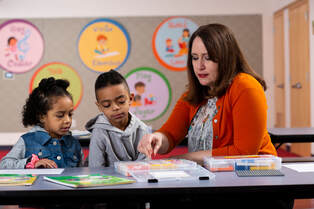 This lesson is the first one you'll use to teach students what data sets are and how to represent them graphically and with bricks. This is part of the K-2 math curriculum in most schools. The lesson introduces the terms data point, data set, and analyze, which are all important vocabulary words to understand when learning about data. The lesson uses three different colors of bricks to represent attributes of the data, and it uses the studs on the bricks to track the number of data points within each category of data. 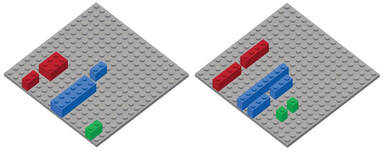 The lesson also connects to the math symbols <, >, and = . As soon as they are introduced to the subject, students learn to analyze data both in words and through math sentences. Brick Math is a K-6 math curriculum that uses LEGO® bricks to model 11 different math subjects:
Counting, Addition, Subtraction, Multiplication, Division, Basic Fractions, Basic Measurement, Fraction Multiplication, Fraction Division, Advanced Measurement and Geometry, and Decimals. This year, the program will expand to include grades 6 - 8, with the additional subjects Data and Statistics, Pre-Algebra, and Ratios and Proportions. Brick Math works in many applications: for homeschooling, math intervention, enrichment, and as a whole-school program. Materials are simple and affordable. If you are a math teacher or a parent with a student at home who is learning K - 8th grade math, check brickmath.com. The website includes videos for both teacher training and direct instruction of students. You can learn more about how Brick Math improves students' math test scores and hear what people who are using Brick Math have to say about the program. 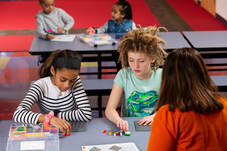 February's Lesson of the Month is on multiplying unit fractions by fractions. Unit fractions are those that have a 1 in the numerator. This lesson shows how to model the multiplication of any unit fraction by any other fraction. It's key to understanding what it actually means to multiply fractions together. The lesson is from Brick Math's Fraction Multiplication Using LEGO® Bricks. To get the February 2023 Brick Math Lesson of the Month, "Multiplying Unit Fractions by Fractions," plus a new lesson each month, click here. 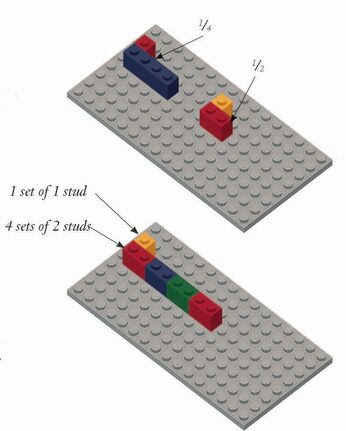 The lesson starts with a discussion of the term unit fraction, along with a discussion about how to determine which unit fraction is largest: 1/2, 1/3, or 1/4. The lesson then moves on to modeling two multiplication problems. Most 4th - 6th grade math teachers would agree that multiplying and dividing fractions is a very tricky subject for students to understand. The methods in Brick Math help make clear to students what is actually happening when two fractions are multiplied together -- not simply the process of multiplying the numerators and denominators together. This kind of deep understanding gives students a strong foundation in math that they can build on as they progress into middle school math and beyond. Brick Math is a K-6 math curriculum that uses LEGO® bricks to model 11 different math subjects: Counting, Addition, Subtraction, Multiplication, Division, Basic Fractions, Basic Measurement, Fraction Multiplication, Fraction Division, Advanced Measurement and Geometry, and Decimals. This year, the program will expand to include grades 6 - 8, with the additional subjects Data and Statistics, Pre-Algebra, and Ratios and Proportions. Brick Math works in many applications: for homeschooling, math intervention, enrichment, and as a whole-school program. Materials are simple and affordable.
If you are a math teacher or a parent with a student at home who is learning K - 6th grade math, check brickmath.com. The website includes videos for both teacher training and direct instruction of students. You can learn more about how Brick Math improves students' math test scores and hear what people who are using Brick Math have to say about the program. 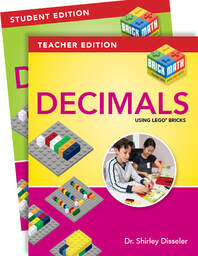 The August 2021 Lesson of the Month comes from the Decimals book. To get the August 2021 Lesson of the Month, plus a new lesson each month, click here. For the first time, we’re showing you Part 2 of a lesson, or “Show What You Know.” This comes after the teacher has demonstrated the skill in Part 1 of the lesson (“Show Them How”), with the students working along with their own bricks. In Part 2, the teacher poses a problem for the students to work out while the teacher observes and coaches. 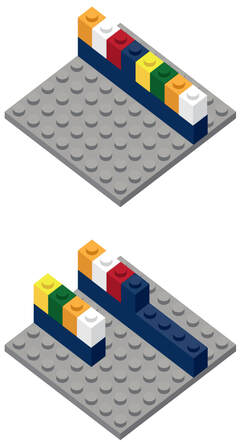 In Part 1, students have learned how to model decimals in a 100 x 100-stud decimal grid. In Part 2, students are first asked to model 0.42 in a decimal grid with bricks. Next, they are asked to try modeling any combination of studs that adds up to 0.30. In the Decimals book, the example illustrated is 0.14 + 0.16. The 100 x 100 decimal grid is a very useful tool to explain the concept of decimals to the one-hundredth place. Author of the Brick Math series, Dr. Shirley Disseler, demonstrates how to teach this decimal addition lesson in a one-minute Brick Math video, which is also part of the August 2021 Lesson of the Month. Watching the videos on the website really helps a teacher or parent understand how to guide a student through the Brick Math curriculum. Brick Math is a K-6 math curriculum that uses LEGO® bricks to model 11 different math subjects: Counting, Addition, Subtraction, Multiplication, Division, Basic Fractions, Basic Measurement, Fraction Multiplication, Fraction Division, Advanced Measurement and Geometry, and Decimals. It works well for homeschooling, math intervention, enrichment, and as a whole-school program. Materials are simple and affordable. If you teach math or have a student at home who is learning math, check brickmath.com. The website includes videos for both teacher training and direct instruction of students. You can learn more about how Brick Math improves student math test scores and hear what people who are using Brick Math have to say about the program. 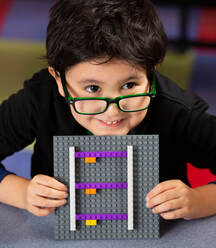 Happy summer to everyone! It's been a looooong school year for teachers, students, and parents—not one we hope to repeat again! Here's a new Brick Math Lesson of the Month for you to try. We think the Brick Math program will be especially helpful in the upcoming school year for kids who have lost some math skills during the pandemic year. 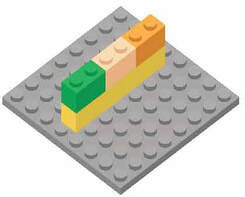 The Brick Math Lesson of the Month for July 2021 is on Division Basics. It's a great way to introduce the concept of division to a student. The lesson uses LEGO bricks to model three basic division problems: 4 ÷ 2 = 2; 8 ÷ 4 = 2; and 6 ÷ 3 = 2. When a student builds the problems with bricks and counts the studs on each brick, the idea of division is made simple to learn. To get the July 2021 Lesson of the Month, plus a new lesson each month, click here. The lesson is accompanied by a short video that illustrates the brick building process for each problem. Watch it before you teach the lesson to your student(s), or watch it along with your student(s)! 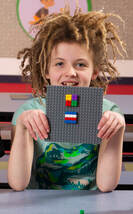 Brick Math is a K-6 math curriculum that uses LEGO® bricks to model 11 different math subjects: Counting, Addition, Subtraction, Multiplication, Division, Basic Fractions, Basic Measurement, Fraction Multiplication, Fraction Division, Advanced Measurement and Geometry, and Decimals. It works well for homeschooling, math intervention, enrichment, and as a whole-school program. Materials are simple and affordable. If you teach math or have a student at home who is learning math, check brickmath.com. The website includes videos for both teacher training and direct instruction of students. You can learn more about how Brick Math improves student math test scores and hear what people who are using Brick Math have to say about the program. 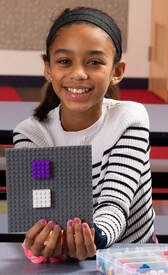 This month's free Brick Math Lesson of the Month is simple but powerful. It demonstrates the idea of fact families and shows students how to model them using LEGO® bricks so they can fully grasp the concept. This lesson, "Fact Families," from Multiplication Using LEGO® Bricks, includes pages from the Teacher and Student books, along with a video demonstrating the lesson. To get the June 2021 Lesson of the Month and a link to the video lesson, plus a new lesson each month, click here. 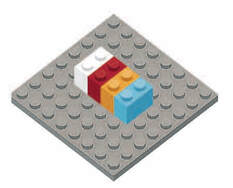 Knowing fact families is a big step toward learning multiplication facts. In this lesson, students are asked to model the fact families for the numbers 6 and 8 using bricks. The lesson also gives teachers a very clear way to demonstrate the meaning of "4 sets of 2" (4 x 2) versus "2 sets of 4" (2 x 4). Besides showing the commutative property of multiplication, the concept of sets is important in many applications , including engineering, as well as a simple application such as sharing! 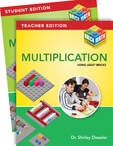 This lesson is from Chapter 3 of Multiplication Using LEGO® Bricks in the Brick Math series. Students typically learn this skill in grades 2-3. Try the free lesson with your students to see how much fun it is to learn with Brick Math! Brick Math is a K-6 math curriculum that uses LEGO® bricks to model 11 different math subjects: Counting, Addition, Subtraction, Multiplication, Division, Basic Fractions, Basic Measurement, Fraction Multiplication, Fraction Division, Advanced Measurement and Geometry, and Decimals. It works well for homeschooling, math intervention, enrichment, and as a whole-school program. Materials are simple and affordable. If you teach math or have a student at home who is learning math, check brickmath.com. The website includes videos for both teacher training and direct instruction of students. You can learn more about how Brick Math improves student math test scores and hear what people who are using Brick Math have to say about the program. This lesson teaches students about the factors of 16. To get the March 2021 lesson, and a new lesson each month, sign up here. This might be my favorite lesson in the entire Brick Math curriculum, because it does so many things so well: 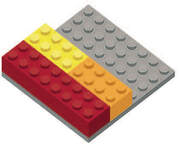
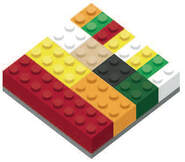 I use this lesson often when I’m demonstrating how well Brick Math works as a complete learning solution for elementary math. It always helps someone new to the program understand how effective the Brick Math methods are. Try the lesson with your student(s) today to demonstrate factors. The first two pages are from the Teacher Lesson Guide. The next two pages are for the student to use as they learn. There is a baseplate on the last page where the student can draw his/her final model of the factors of 16, plus space to list all the factors of 16. We guarantee they will have that “aha” moment when you teach factors this way! 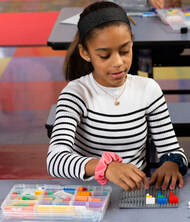 Brick Math’s Basic Fractions Using LEGO® Bricks is a great way to get started with the topic of fractions. It starts by teaching the concept of fractions and progresses through unit fractions, addition and subtraction of fractions, and both like and unlike denominators. The use of LEGO® bricks to model the math makes it fun to learn, too! Brick Math is a K-6 math curriculum that uses LEGO® bricks to model 11 different math subjects: Counting, Addition, Subtraction, Multiplication, Division, Basic Fractions, Basic Measurement, Fraction Multiplication, Fraction Division, Advanced Measurement and Geometry, and Decimals. It works well for homeschooling, math intervention, enrichment, and as a whole-school program. Materials are simple and are not shared between students. It adapts easily to online instruction. If you teach math or have a student at home who is learning math, check brickmath.com. The website includes videos for both teacher training and direct instruction of students. You can learn more about how Brick Math improves student math test scores and hear what people who are using Brick Math have to say about the program. 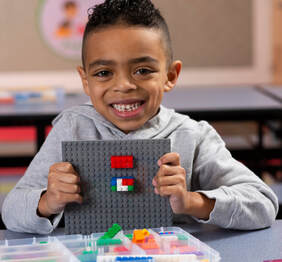 Happy New Year! The Brick Math Lesson of the Month for January 2021 teaches students the basics of addition using LEGO® bricks. It's a simple, yet very effective, way to show students what it means to add two numbers together. Try it with the numbers shown in the lesson, and then use the same technique with other numbers until your students fully comprehend the meaning of addition. To get the January 2021 lesson, and a new lesson each month, sign up here. Try this with your students, at home or in the classroom (or in the virtual classroom). The Brick Math system of representing numbers with LEGO® bricks is the perfect way to introduce students to the concept of addition. If your students are very young, you could use the same technique with larger DUPLO® bricks. 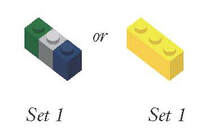 The lesson starts with the Teacher's Lesson Guide. All the steps for teaching students how to model the numbers 3 and 4 are included. Then the lesson shows students how to model the addition of those two numbers and find the sum. The corresponding pages from the Student Workbook follow, with space for the student to write responses as well as draw the models they have built. Brick Math is a K-6 math curriculum that uses LEGO® bricks to model 11 different math subjects:
Counting, Addition, Subtraction, Multiplication, Division, Basic Fractions, Basic Measurement, Fraction Multiplication, Fraction Division, Advanced Measurement and Geometry, and Decimals. It works well for homeschooling, math intervention, enrichment, and as a whole-school program. Materials are simple and are not shared between students. It adapts easily to online instruction. If you teach math or have a student at home who is learning math, check brickmath.com. The website includes videos for both teacher training and direct instruction of students. You can learn more about how Brick Math improves student math test scores and hear what people who are using Brick Math have to say about the program. 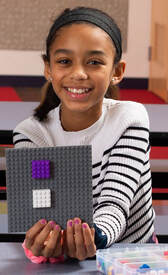 The Brick Math Lesson of the Month for December 2020 teaches students how to model decimals using LEGO® bricks. The system really helps students understand the meaning of decimals, because different-sized bricks represent tenths, hundredths, and thousandths. To get the December 2020 lesson, and a new lesson each month, sign up here. Try this with your students, at home or in the classroom (or in the virtual classroom). This system of representing decimals with bricks is a great way to reinforce the idea of decimals. 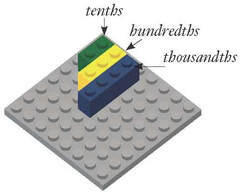 The lesson starts with the Teacher's Lesson Guide. All the steps for teaching students how to model several different decimals are included. The corresponding pages from the Student Workbook follow, with space for the student to write responses as well as draw the models they have built. The illustration below shows, on the left, the brick model for the decimal 0.23, and on the right, a drawing of that same model. Brick Math is a K-6 math curriculum that uses LEGO® bricks to model 11 different math subjects:
Counting, Addition, Subtraction, Multiplication, Division, Basic Fractions, Basic Measurement, Fraction Multiplication, Fraction Division, Advanced Measurement and Geometry, and Decimals. It works well for homeschooling, math intervention, enrichment, and as a whole-school program. Materials are simple and are not shared between students. It adapts easily to online instruction. If you teach math or have a student at home who is learning math, check brickmath.com. The website includes videos for both teacher training and direct instruction of students. You can learn more about how Brick Math improves student math test scores and hear what people who are using Brick Math have to say about the program. |
Categories
All
Archives
July 2024
|

